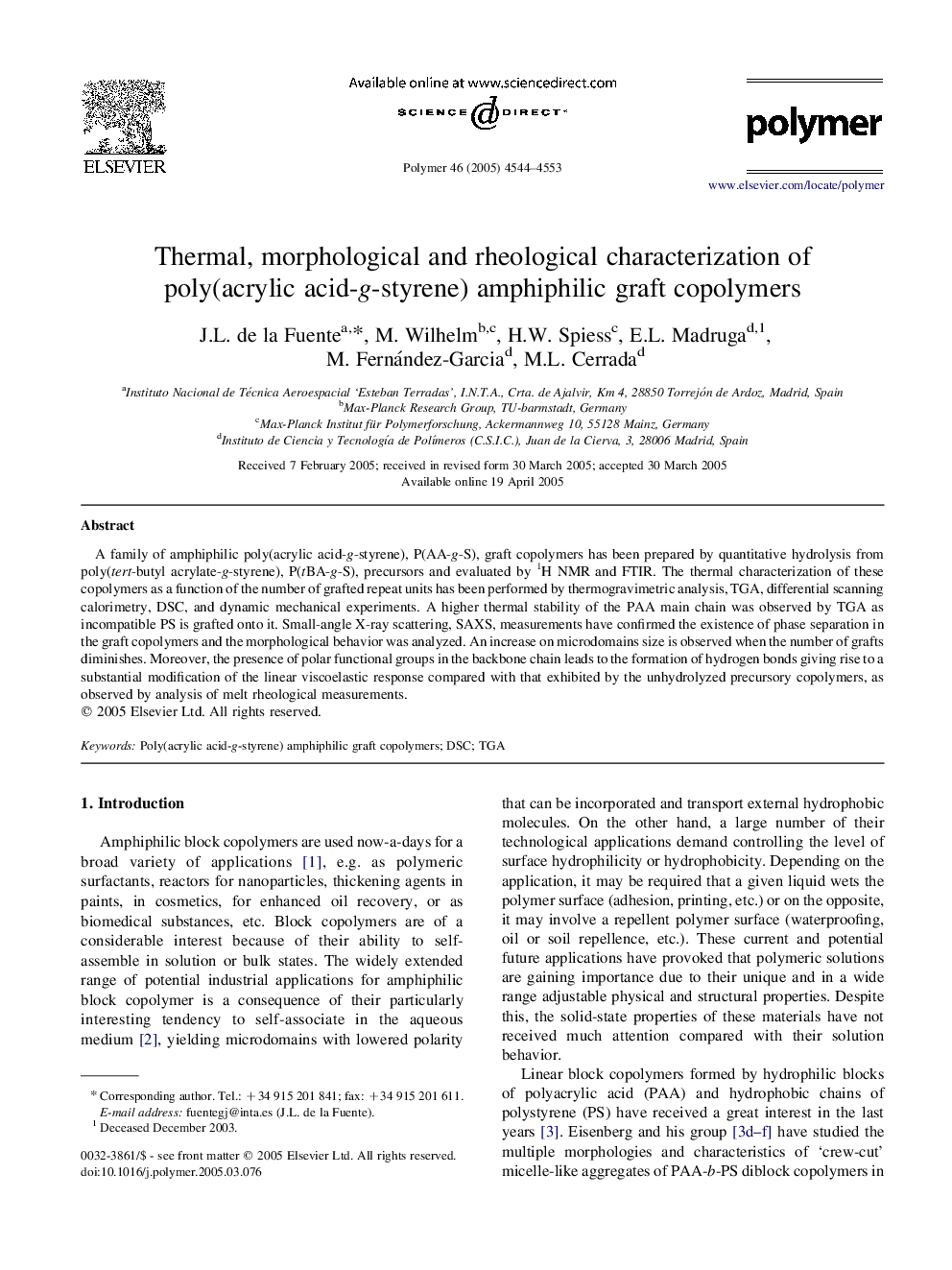| Article ID | Journal | Published Year | Pages | File Type |
|---|---|---|---|---|
| 5191617 | Polymer | 2005 | 10 Pages |
Abstract
A family of amphiphilic poly(acrylic acid-g-styrene), P(AA-g-S), graft copolymers has been prepared by quantitative hydrolysis from poly(tert-butyl acrylate-g-styrene), P(tBA-g-S), precursors and evaluated by 1H NMR and FTIR. The thermal characterization of these copolymers as a function of the number of grafted repeat units has been performed by thermogravimetric analysis, TGA, differential scanning calorimetry, DSC, and dynamic mechanical experiments. A higher thermal stability of the PAA main chain was observed by TGA as incompatible PS is grafted onto it. Small-angle X-ray scattering, SAXS, measurements have confirmed the existence of phase separation in the graft copolymers and the morphological behavior was analyzed. An increase on microdomains size is observed when the number of grafts diminishes. Moreover, the presence of polar functional groups in the backbone chain leads to the formation of hydrogen bonds giving rise to a substantial modification of the linear viscoelastic response compared with that exhibited by the unhydrolyzed precursory copolymers, as observed by analysis of melt rheological measurements.
Related Topics
Physical Sciences and Engineering
Chemistry
Organic Chemistry
Authors
J.L. de la Fuente, M. Wilhelm, H.W. Spiess, E.L. Madruga, M. Fernández-Garcia, M.L. Cerrada,
